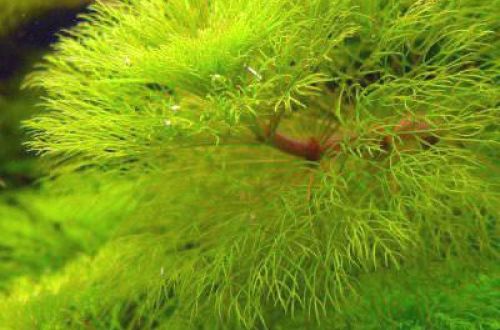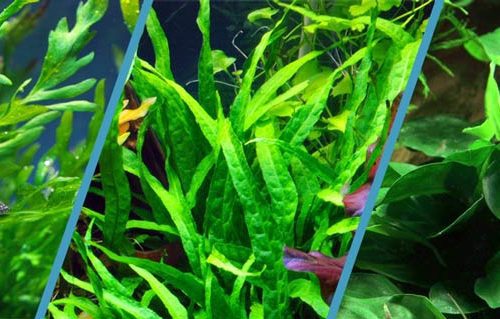
Limnophila gigantea
Limnophila gigantea, scientific name Limnophila sp. Gigantea. The plant is native to Southeast Asia. It grows along the banks of open, unshaded bodies of water with a slow or weak current, such as lakes, quiet river backwaters, tropical swamps, etc.

Outwardly, it resembles another closely related species – aquatic Limnophila. Both plants form an upright stem with pinnate, lace-like leaves. Limnophila gigantea differs only in the tips of the leaves, which have reddish hues.
The plant needs a high level of lighting. If there is not enough light, then the lower leaves begin to die. The introduction of carbon dioxide during the daytime is recommended. The water must be very clean. The absence of organic suspension will prevent leaf silting and algae growth. The substrate is key. It is advisable to use a special aquarium soil rich in (nitrates, phosphates and potassium). It was noted that at high phosphate concentrations of 2 mg/l, the distance between whorls decreases, which gives the plant a more “fluffy” appearance. Iron deficiency leads to loss of leaf color.
In favorable conditions, it grows very quickly and develops many side shoots. If young sprouts are not separated, beautiful dense thickets will soon appear in the aquarium. Limnophila gigantea will find use in medium and large aquariums for the background. Due to the unusual shape of the leaves, it contrasts beautifully with plants of a different shape of the leaves, which predetermined its popularity in Dutch style aquariums.
Able to grow in air on moist substrates. In this case, the leaves acquire the usual lanceolate shape.




